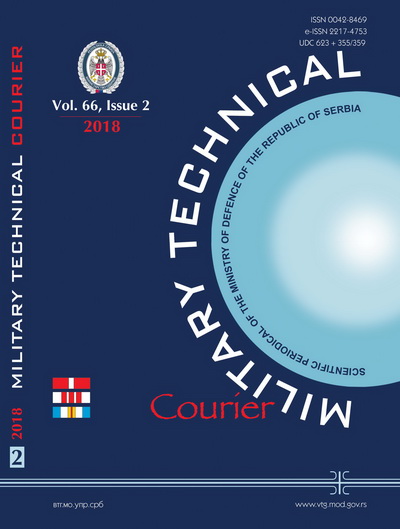Application of small and micro cogeneration units
Abstract
By 1973, low oil prices had provided the production of relatively cheap electricity. A sudden increase in gas prices caused a need for developing energy technologies as well as a need for increasing the efficiency of power plants. At the same time, increased environmental awareness as well as the awareness of the growing scarcity of energy sources required greater attention to preserving the environment and the existing resources, so small and micro cogeneration plants become efficient and competitive energy producers. The United States and Canada are currently lagging behind Europe and Japan in relation to the development of micro cogeneration units, partly because of differences in heating systems, energy prices and political framework. In accordance with the Kyoto Protocol, Japan is obliged to reduce its global warming i.e. gas emissions by 6% of the 1990 level. However, CO2 emissions continue to grow, which means that it is currently estimated that Japan must reduce emissions by 14% to meet the goal. Japan should promote all possible ways to effectively reduce CO2 emissions. In this regard, it continues to give support to micro cogeneration marketing, especially for models suitable for residential buildings. It is estimated that, in the next few years, energy production by cogeneration will reach 75% of the total production at the European level. In Italy, ecological energy makes 30% of the total consumption, in the Netherlands 33%, and in Denmark and the UK it is almost completely present.
References
Alanne, K., Laukkanen, T., Saari, K. & Jokisalo, J. 2014. Analysis of a wooden pellet-fueled domestic thermoelectric cogeneration system. Applied Thermal Engineering, 63(1), pp.1-10. Available at: https://doi.org/10.1016/j.applthermaleng.2013.10.054.
-Cummins Inc. 2014. Available at: http://www.cumminspower.com. Accessed: 01.12. 2014.
de Paepe, M., D'herdt, P. & Mertens, D. 2006. Micro-CHP systems for residential applications. Energy Conversion and Management, 47(18-19), pp.3435-3446. Available at: https://doi.org/10.1016/j.enconman.2005.12.024.
Despotović, M. & Babić, M. 2007. Energija biomase. Kragujevac: University of Kragujevac - Faculty of Mechanical Engineering (in Serbian).
http://www.erec.org. Accessed: 01.12. 2014.
Pehnt, M., Cames, M., Fischer, C., Praetorius, B., Schneider, L., Schumacher, K. & Voß, J.P. 2006. Micro Cogeneration: Towards Decentralized Energy Systems. [e-book]. Berlin Heidelberg: Springer-Verlag. Available at: http://www.springer.com/us/book/9783540255826. Accessed: 01. December 2014.
Rosato, A. & Sibilio, S. 2013. Energy performance of a micro-cogeneration device during transient and steady-state operation: Experiments and simulations. Applied Thermal Engineering, 52(2), pp.478-491. Available at: https://doi.org/10.1016/j.applthermaleng.2012.12.028
Zukić, D., Stone, A. & Cox, R. 2005. Mala kogenerativna postrojenja kao ekonomski opravdana, ekonomski efikasna, a ekološki prihvatljiva tehnologija. Energija, 2-3, pp.259-262 (in Serbian).
Proposed Creative Commons Copyright Notices
Proposed Policy for Military Technical Courier (Journals That Offer Open Access)
Authors who publish with this journal agree to the following terms:
Authors retain copyright and grant the journal right of first publication with the work simultaneously licensed under a Creative Commons Attribution License that allows others to share the work with an acknowledgement of the work's authorship and initial publication in this journal.
- Authors are able to enter into separate, additional contractual arrangements for the non-exclusive distribution of the journal's published version of the work (e.g., post it to an institutional repository or publish it in a book), with an acknowledgement of its initial publication in this journal.
- Authors are permitted and encouraged to post their work online (e.g., in institutional repositories or on their website) prior to and during the submission process, as it can lead to productive exchanges, as well as earlier and greater citation of published work (See The Effect of Open Access).

